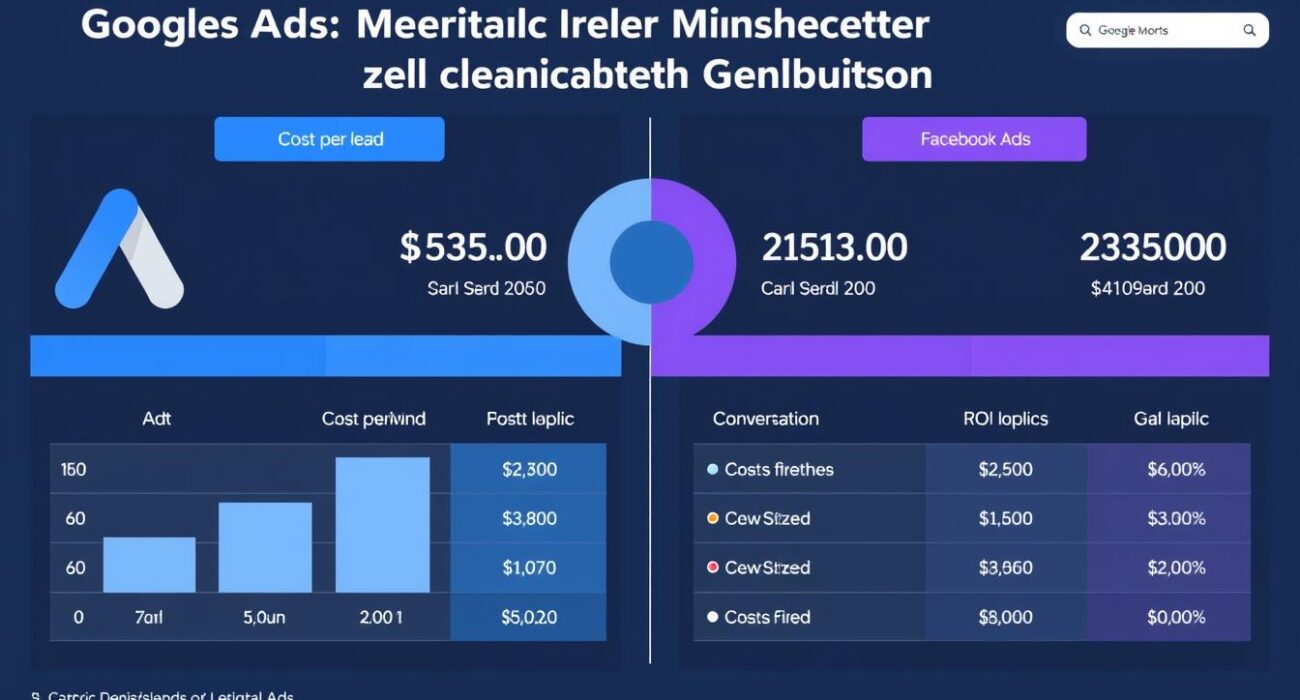Understanding the Lead Generation Mechanics: Google Ads vs Facebook Ads
Before diving into which platform might work better for your business, it’s essential to understand how each one fundamentally approaches lead generation. The mechanics behind how Google Ads and Facebook Ads connect you with potential customers are fundamentally different, and this difference impacts everything from cost to conversion quality.
The Search-Intent Advantage of Google Ads
Google Ads operates on a search-intent model, meaning your ads appear when users are actively searching for products or services like yours. This intent-based approach means you’re capturing prospects at the moment they’re looking for solutions—often with their credit card already in hand.
When someone searches “best CRM software for small business” or “local marketing agency near me,” they’re demonstrating clear intent. Google Ads lets you position your business directly in front of these high-intent prospects through:
- Search ads that appear at the top of Google search results
- Display ads across the Google Display Network
- YouTube video ads targeting relevant viewers
- Shopping ads for product-based businesses
This intent-capturing approach often translates to higher conversion rates and faster sales cycles, as you’re meeting prospects exactly when they’re looking for what you offer.
Facebook’s Hyper-Targeted Audience Networks
Facebook Ads takes a fundamentally different approach. Rather than waiting for users to search for your offering, Facebook allows you to proactively target potential customers based on detailed demographic, interest, and behavioral data.
Facebook’s sophisticated targeting capabilities let you reach people who match your ideal customer profile, even if they aren’t actively searching for your solution yet. This approach works through:
- News Feed ads on Facebook and Instagram
- Story ads across Meta platforms
- Messenger ads reaching users in private conversations
- Audience Network ads extending your reach across partner apps
While these prospects might not be actively searching for your solution, Facebook’s targeting precision means you can put your message in front of people who are likely to be interested, creating demand rather than just capturing it.
Key Factors That Determine Lead Generation Success
When evaluating which platform will deliver better leads for your business, several critical factors come into play. Understanding these differences will help you make a more informed decision about where to invest your advertising budget.
Audience Targeting: Intent vs. Demographics
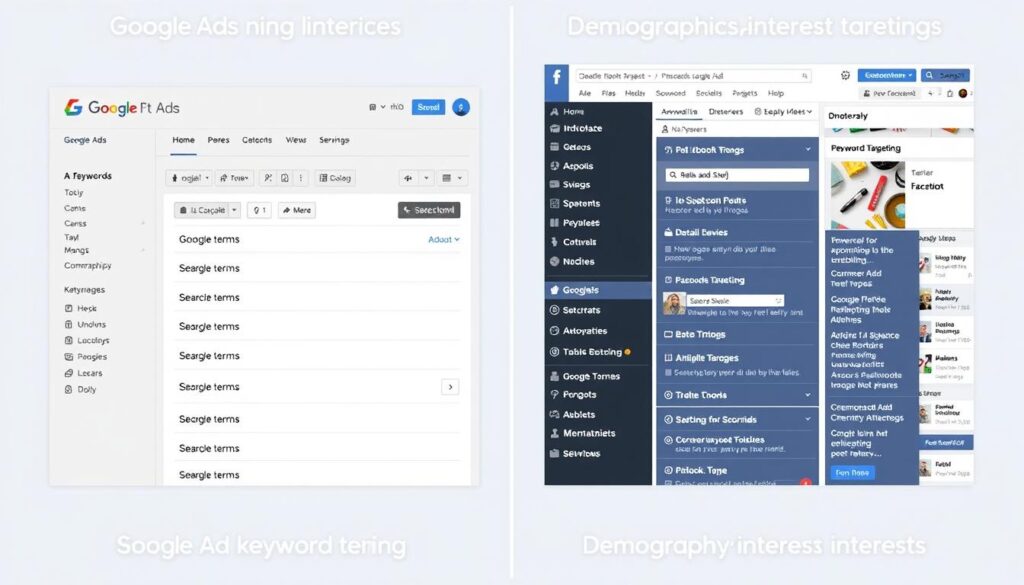
Google Ads Targeting
Google Ads excels at capturing users actively searching for products or services. This intent-based targeting means:
- You reach people at the moment they’re looking for solutions
- Keyword targeting lets you capture specific search intent
- Location targeting helps reach local prospects
- Audience targeting can be layered with search intent
- Remarketing can re-engage previous site visitors
This approach often delivers higher-intent leads who are further along in the buying journey, making them potentially more valuable and easier to convert.
Facebook Ads Targeting
Facebook Ads offers unparalleled demographic and interest-based targeting. This approach means:
- Target based on detailed demographic information
- Interest targeting reaches people based on their activities
- Behavioral targeting identifies prospects by actions they’ve taken
- Custom audiences let you reach existing contacts
- Lookalike audiences find people similar to your best customers
This targeting precision allows you to reach potential customers before they even start searching, creating awareness and demand that can later translate into high-quality leads.
Not sure which targeting approach is right for your business?
Download our free targeting strategy guide to learn which platform’s targeting capabilities best align with your specific lead generation goals.
Ad Formats: Capturing Leads Through Different Approaches
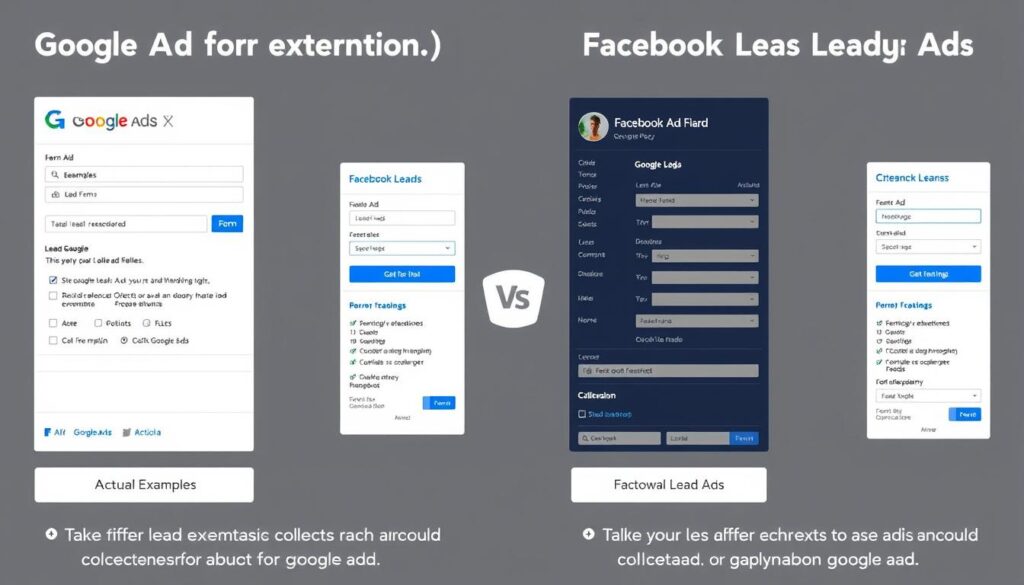
Google Ads Lead Generation Formats
Google offers several ad formats specifically designed for lead generation:
- Lead form extensions that capture information directly from search results
- Call extensions that enable one-click phone calls
- Message extensions for direct SMS communication
- Local Service Ads with built-in lead management
- YouTube lead form ads for video viewers
These formats capitalize on search intent, making it easy for interested prospects to connect with your business without friction.
Facebook Ads Lead Generation Formats
Facebook has developed sophisticated lead capture mechanisms:
- Lead Ads with pre-populated forms for one-click submission
- Instant Forms that load within the Facebook platform
- Carousel ads showcasing multiple offerings
- Messenger ads that initiate conversations
- Instagram Story ads with swipe-up lead forms
These formats excel at capturing leads within the platform, reducing friction and increasing conversion rates by eliminating the need to visit external websites.
Cost Per Lead: Budgeting for Success
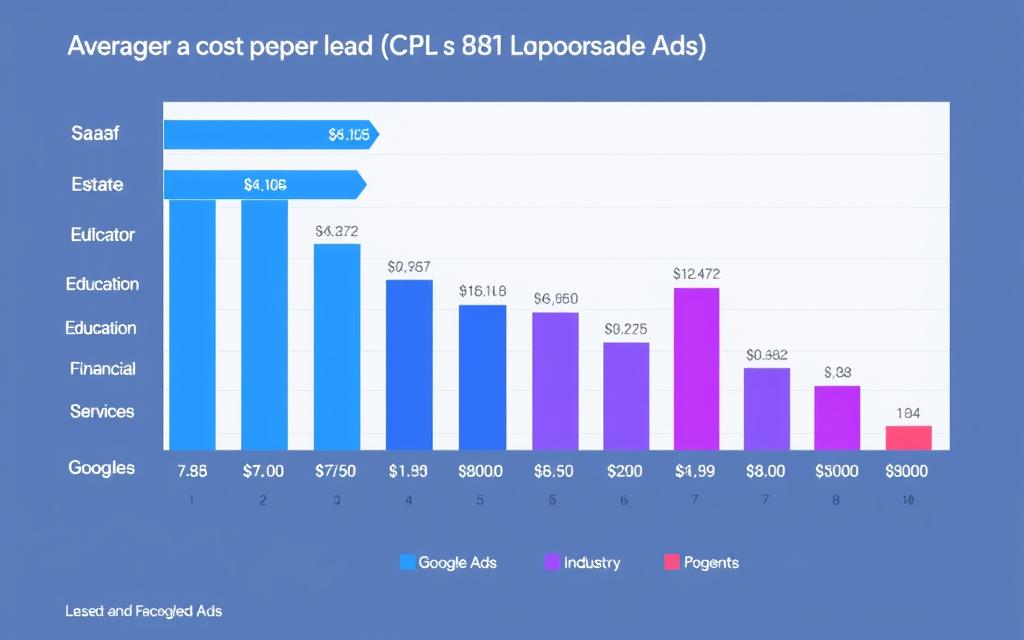
Cost is often the deciding factor when choosing between advertising platforms. While costs vary significantly by industry, competition, and targeting approach, there are some general trends worth noting:
| Industry | Google Ads Avg. CPL | Facebook Ads Avg. CPL | Typical Difference |
| B2B SaaS | $45-75 | $35-65 | Google 20-30% higher |
| Financial Services | $65-125 | $40-80 | Google 40-50% higher |
| Education | $40-85 | $25-60 | Google 30-40% higher |
| Healthcare | $55-105 | $35-75 | Google 35-45% higher |
| Real Estate | $35-80 | $20-50 | Google 40-60% higher |
| E-commerce | $30-65 | $15-45 | Google 45-65% higher |
While Facebook Ads typically offer a lower cost per lead across most industries, it’s important to consider lead quality alongside raw cost metrics. Google’s higher CPL often comes with higher intent and conversion rates, potentially delivering better ROI despite the higher initial cost.
Performance varies based on industry and strategy. The figures above represent industry averages, but your specific results may vary based on targeting approach, ad creative quality, landing page experience, and competitive landscape.
Conversion Speed: Immediate vs. Nurturing Timelines
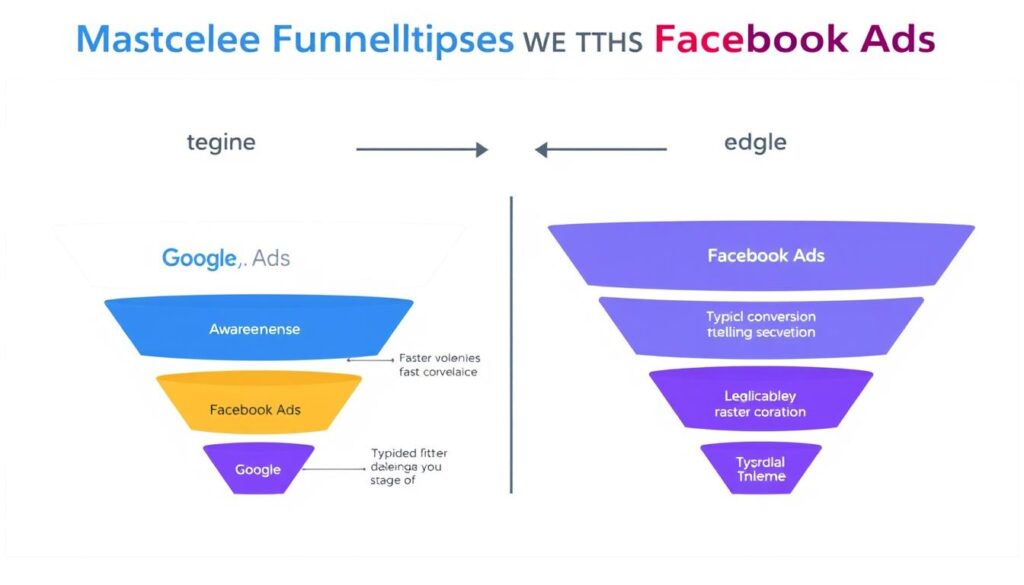
Google Ads: The Speed Advantage
Google Ads typically delivers faster conversions because:
- Users are actively searching for solutions
- Higher purchase intent translates to quicker decisions
- The path from ad to conversion is often shorter
- Users are further along in the buying journey
For businesses needing immediate lead flow or with shorter sales cycles, Google’s speed-to-conversion advantage can be significant.
Facebook Ads: The Nurturing Approach
Facebook Ads often require more nurturing because:
- Users aren’t actively searching when they see your ad
- The platform excels at awareness and interest generation
- Conversion typically requires multiple touchpoints
- Retargeting sequences are often necessary
For businesses with longer sales cycles or complex offerings, Facebook’s nurturing approach can build stronger relationships and higher lifetime value.
Real-World Examples: Platform Performance in Action
Theory is helpful, but seeing how these platforms perform in real-world scenarios provides valuable context. Let’s examine two case studies that highlight the strengths of each platform for lead generation.
Case Study: How a SaaS Company Reduced CPL by 30% with Google Ads
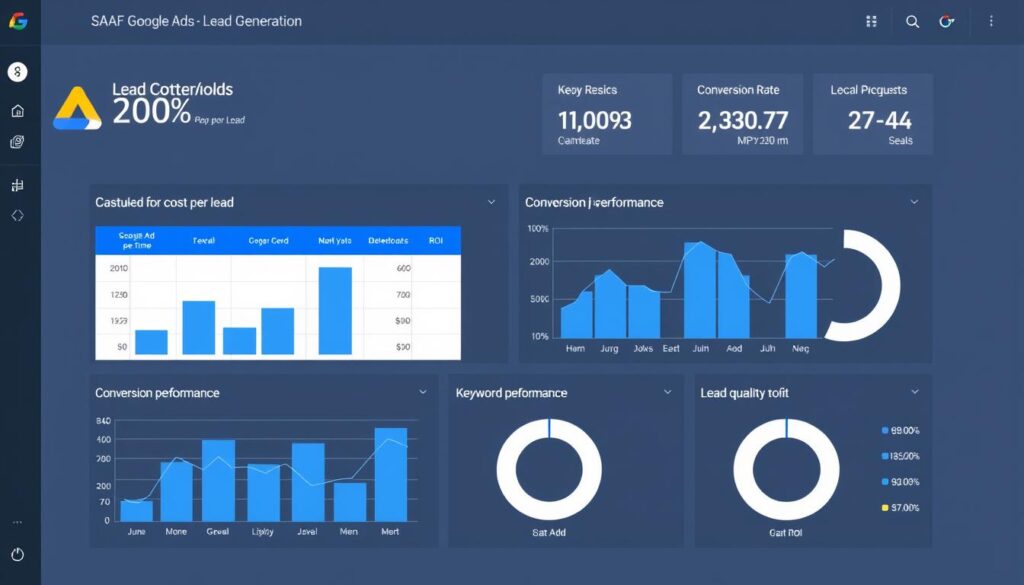
Company Profile: Enterprise project management software provider targeting mid-market businesses
Challenge: High customer acquisition costs and inconsistent lead quality from existing channels
Approach: The company implemented a Google Ads strategy focused on high-intent keywords related to specific pain points their software solved. They created:
- Targeted search campaigns for bottom-of-funnel keywords like “enterprise project management software comparison”
- Lead form extensions to capture information directly from search results
- Remarketing campaigns targeting users who visited product pages
- Negative keyword lists to filter out unqualified traffic
Results: Within 90 days, the company saw:
- 30% reduction in cost per qualified lead
- 42% increase in demo request conversion rate
- 25% higher average deal size from Google Ads leads
- 18% shorter sales cycle compared to other channels
Key Insight: The high-intent nature of search traffic delivered prospects who were actively evaluating solutions, resulting in faster conversions and higher-quality leads despite the initially higher cost per click.
Case Study: How a Financial Services Firm Scaled Lead Volume with Facebook Ads
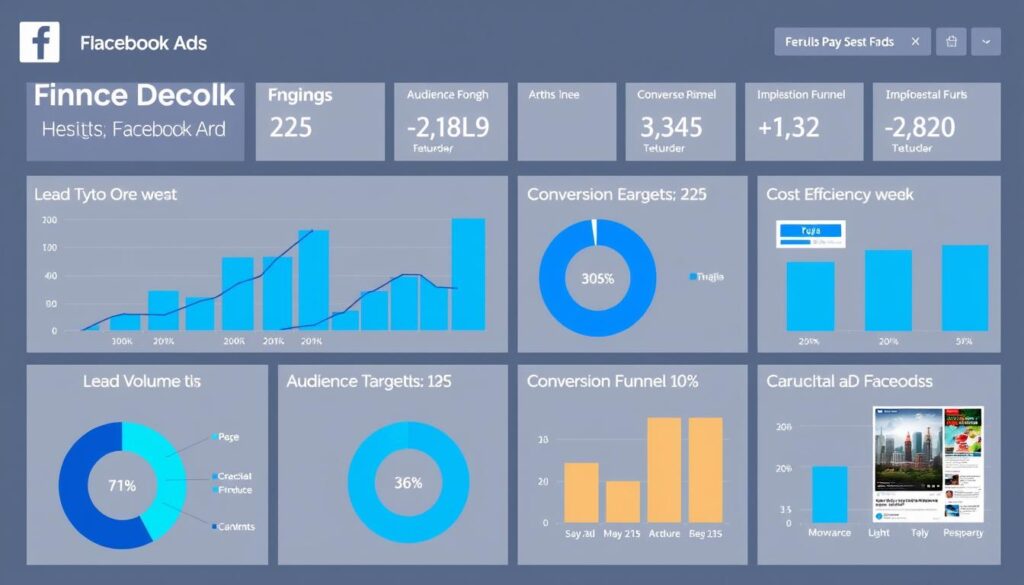
Company Profile: Financial advisory firm specializing in retirement planning for professionals aged 45-65
Challenge: Limited market awareness and difficulty scaling beyond referrals
Approach: The firm implemented a Facebook Ads strategy leveraging detailed demographic and behavioral targeting. They created:
- Lookalike audiences based on their existing high-value clients
- Custom audiences segmented by profession and life stage
- Lead Ads offering a retirement readiness assessment
- Multi-stage nurturing sequences with educational content
Results: Within 6 months, the firm achieved:
- 215% increase in monthly lead volume
- 40% lower cost per lead compared to previous channels
- 28% conversion rate from lead to consultation
- 3.8x return on ad spend when measuring closed business
Key Insight: While Facebook leads required more nurturing than direct search traffic, the platform’s precise targeting capabilities allowed the firm to reach ideal prospects at scale, many of whom weren’t actively searching for financial services yet.
Want to see how these strategies could work for your business?
Get a free 30-minute consultation to discuss which platform might deliver better leads for your specific business model and goals.
When to Choose Google Ads vs Facebook Ads for Lead Generation
Rather than declaring one platform universally superior, let’s examine the scenarios where each platform tends to perform best for lead generation.
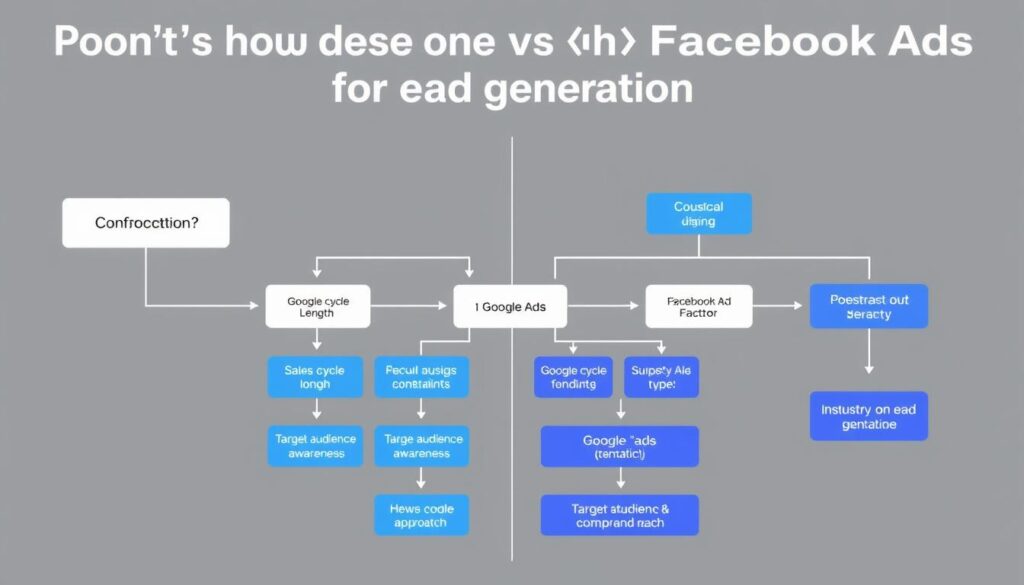
Choose Google Ads When:
Google Ads Excels For:
- Your prospects actively search for solutions you provide
- You need immediate lead flow and quick conversions
- You offer solutions to urgent problems or immediate needs
- Your business has strong search volume for relevant keywords
- You have a shorter sales cycle (days rather than months)
- Your value proposition is straightforward and easily communicated
- You’re targeting local service areas with geographic specificity
- You have a competitive offering that stands out in direct comparisons
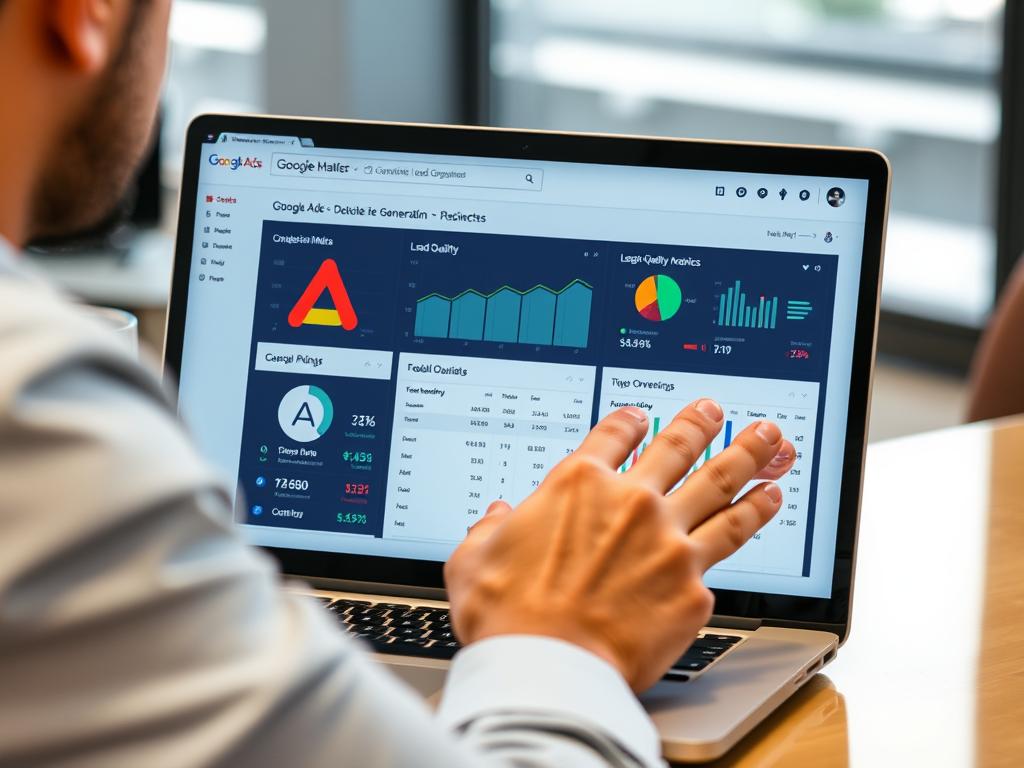
Google Ads is typically the better choice when your business solves problems people are actively searching for solutions to. The platform’s intent-based approach means you’re capturing prospects at the moment they’re looking for what you offer, resulting in higher conversion rates and faster sales cycles.
Industries that typically see strong performance with Google Ads include professional services, emergency services, local businesses, and specialized B2B solutions with clear search intent.
Choose Facebook Ads When:
Facebook Ads Excels For:
- Your solution isn’t something people typically search for yet
- You need to create awareness before generating demand
- You have a visually compelling offering that benefits from imagery
- Your target audience has specific demographic or interest profiles
- You have a longer sales cycle with multiple touchpoints
- Your value proposition requires education or storytelling
- You’re introducing an innovative or novel solution
- You have strong existing customer data for lookalike audiences
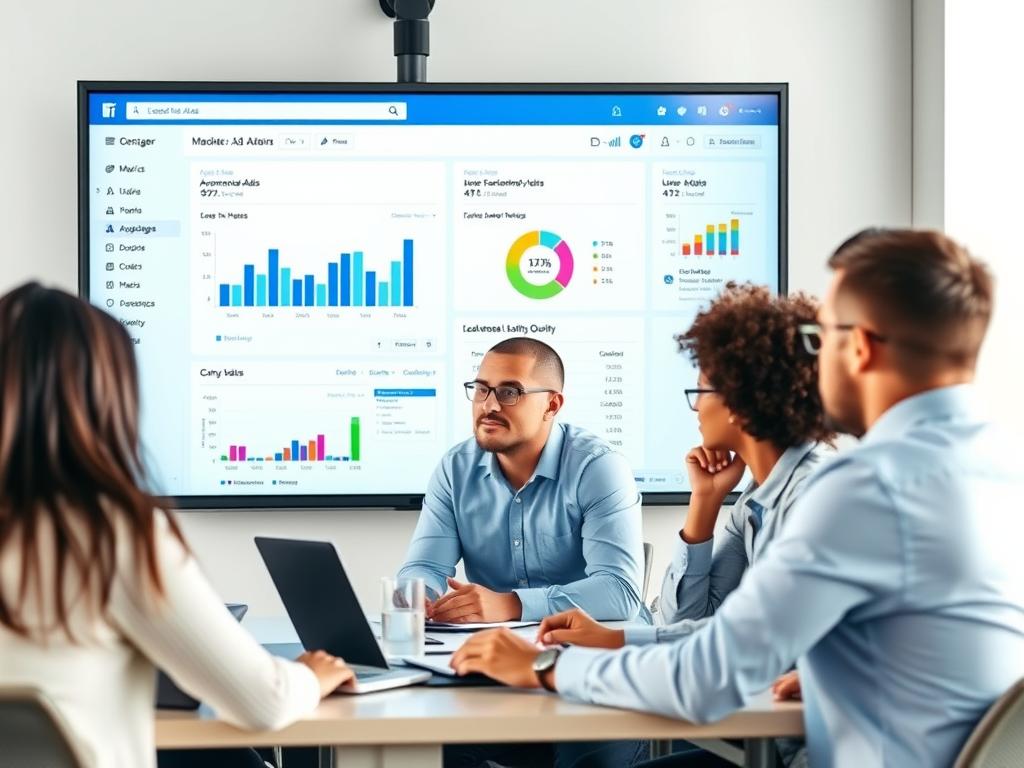
Facebook Ads typically performs better when your business needs to create awareness before capturing demand. The platform’s sophisticated targeting allows you to reach potential customers based on who they are rather than what they’re searching for, making it ideal for novel solutions or complex offerings that require education.
Industries that often see strong results with Facebook Ads include education, innovative consumer products, lifestyle services, and B2B solutions with clearly defined buyer personas.
The Power of a Combined Approach: Using Both Platforms Strategically
While comparing platforms is useful, many businesses find that the most effective lead generation strategy leverages both Google Ads and Facebook Ads in complementary ways. Let’s explore how to create a cohesive multi-platform approach.
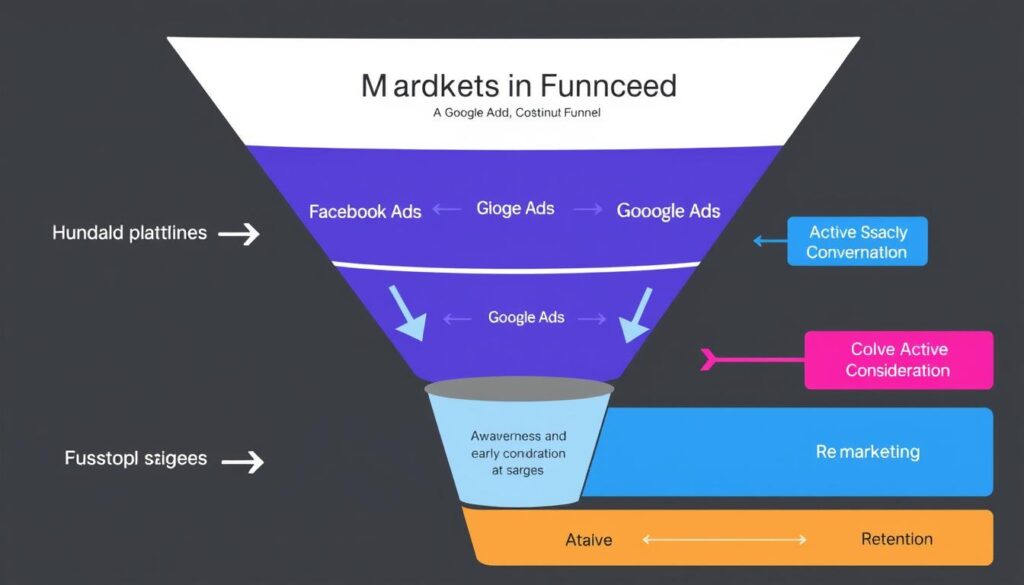
Creating a Full-Funnel Lead Generation Strategy
A strategic multi-platform approach aligns each advertising channel with the stages of the buyer’s journey where they perform best:
| Funnel Stage | Primary Platform | Campaign Objective | Ad Format |
| Awareness | Facebook Ads | Introduce your solution to new audiences | Video ads, carousel ads showcasing benefits |
| Interest | Facebook Ads | Educate prospects about your approach | Lead magnets, webinar registrations |
| Consideration | Both Platforms | Nurture prospects evaluating options | Testimonials, case studies, comparison guides |
| Intent | Google Ads | Capture active solution-seekers | Search ads for solution-specific keywords |
| Evaluation | Google Ads | Convert researchers into leads | Lead form extensions, call extensions |
| Conversion | Both Platforms | Close leads into customers | Remarketing with special offers, urgency |
Practical Implementation Tips for a Multi-Platform Approach
Audience Sharing Between Platforms
Create a data flow between platforms to enhance targeting:
- Upload Google Ads converters to Facebook as a custom audience
- Create lookalike audiences from your Google leads
- Use Facebook engagement to build remarketing lists for Google
- Implement cross-platform tracking for attribution insights
Budget Allocation Strategy
Distribute your budget strategically across platforms:
- Allocate 30-40% to awareness (primarily Facebook)
- Invest 40-50% in consideration and intent (both platforms)
- Reserve 20-30% for conversion optimization (primarily Google)
- Adjust based on performance data and seasonal factors
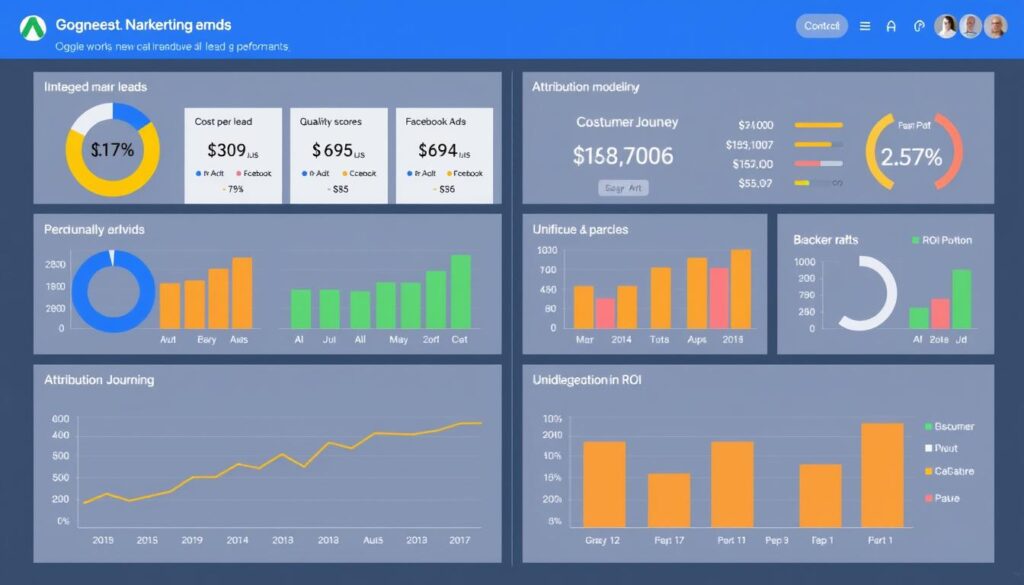
Messaging Consistency Across Platforms
Maintain consistent messaging while adapting to each platform’s strengths:
- Use similar value propositions but format appropriately for each platform
- Ensure visual branding remains consistent across all touchpoints
- Adapt messaging depth based on funnel stage and platform
- Create platform-specific landing pages that maintain brand consistency
“The most successful lead generation campaigns don’t force prospects to choose between platforms—they meet prospects wherever they are in their journey, using each platform’s strengths to move them toward conversion.”
Implementation Guide: Setting Up Your First Lead Generation Campaign
Ready to put these insights into action? Here’s a streamlined process for implementing lead generation campaigns on either platform.
Google Ads Lead Generation Setup
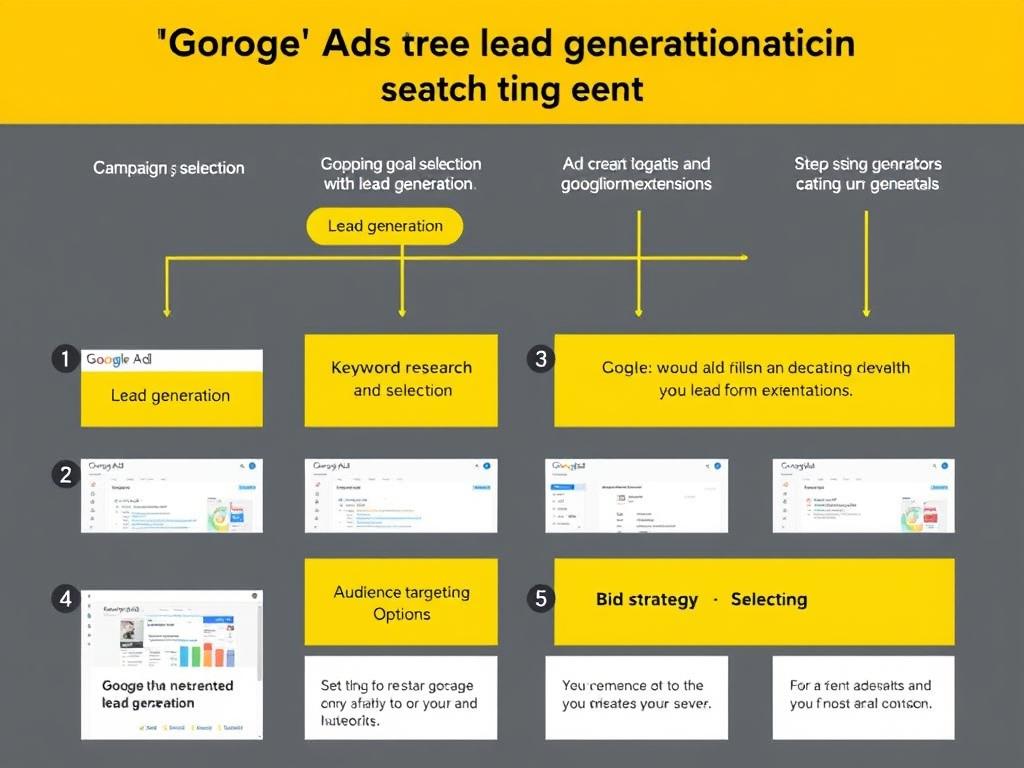
- Define your lead generation goals and KPIs
- Research high-intent keywords relevant to your offering
- Create a campaign structure organized by theme
- Develop compelling ad copy focused on value proposition
- Set up lead form extensions or optimized landing pages
- Implement conversion tracking for lead actions
- Start with manual bidding to gather performance data
- Optimize based on quality score and conversion metrics
Pro Tip: Start with branded and high-intent keywords to capture immediate demand before expanding to broader terms.
Facebook Ads Lead Generation Setup
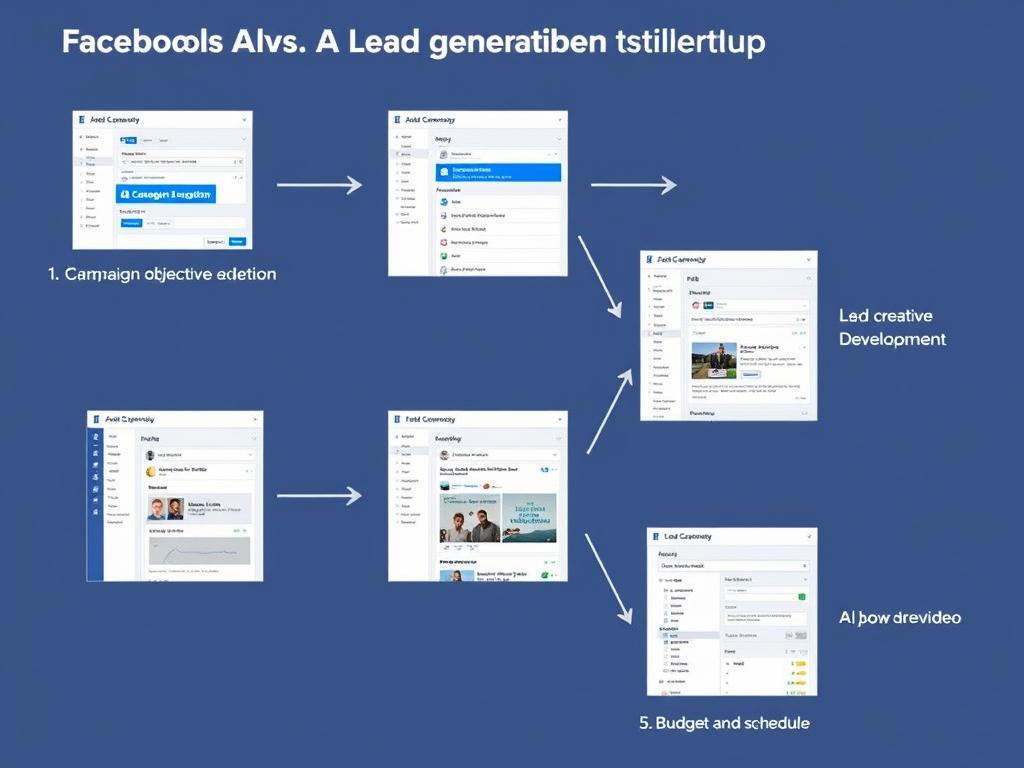
- Define your ideal customer profile and targeting criteria
- Create a lead generation campaign in Ads Manager
- Build detailed audience segments based on demographics and interests
- Design visually compelling ad creative with clear value proposition
- Create an optimized lead form with minimal required fields
- Set up the Facebook pixel for conversion tracking
- Start with automatic placements to gather performance data
- Optimize based on lead quality and cost metrics
Pro Tip: Test multiple audience segments with small budgets before scaling to identify your most responsive audiences.
Lead Quality Optimization Strategies
Generating a high volume of leads is only valuable if those leads convert into customers. Here are strategies to improve lead quality on both platforms:
Google Ads Lead Quality Tactics
- Use negative keywords to filter out unqualified traffic
- Implement qualification questions in lead forms
- Adjust bidding based on lead quality data
- Test different ad messaging to pre-qualify prospects
- Use audience targeting to reach higher-value segments
Facebook Ads Lead Quality Tactics
- Add qualifying questions to lead forms
- Test higher-intent custom audiences
- Use value-based lookalike audiences
- Implement multi-step forms to filter casual inquiries
- Optimize for on-platform engagement before conversion
Ready to implement these strategies but not sure where to start?
Download our Lead Generation Campaign Checklist for step-by-step guidance on setting up effective campaigns on both platforms.
Frequently Asked Questions About Google Ads vs Facebook Ads for Lead Generation
Can I use both Google Ads and Facebook Ads together effectively?
Yes, using both platforms together often delivers the best results. Google Ads excels at capturing high-intent prospects actively searching for solutions, while Facebook Ads is superior for building awareness and nurturing prospects who aren’t actively searching yet. A strategic multi-platform approach allows you to reach prospects at every stage of the buyer’s journey, creating a more comprehensive lead generation funnel.
Which platform is more cost-effective for small businesses with limited budgets?
For most small businesses with limited budgets, Facebook Ads typically offers a lower barrier to entry with more affordable cost per click and minimum daily budgets. However, cost-effectiveness ultimately depends on your specific business model and how well your offering aligns with each platform’s strengths. A local service business might see better ROI from Google Ads despite higher costs, while a new e-commerce brand might find Facebook more cost-effective for building an audience.
How long does it take to see results from each platform?
Google Ads typically delivers faster initial results because you’re capturing existing demand from people actively searching. You can often begin generating leads within days of launching a well-optimized campaign. Facebook Ads usually requires more time to optimize and may take 2-4 weeks to reach peak performance as the algorithm learns which users are most likely to convert. Both platforms require ongoing optimization to maintain and improve performance over time.
Which platform delivers higher quality leads?
Google Ads often delivers higher initial lead quality because users are actively searching for solutions, demonstrating clear intent. However, Facebook Ads can deliver equally high-quality leads when properly targeted and nurtured, especially for products or services that require education before purchase. The key to lead quality on either platform is proper audience targeting, clear messaging that sets expectations, and qualification mechanisms within your lead capture process.
Do I need different landing pages for Google Ads and Facebook Ads?
While not absolutely required, platform-specific landing pages often perform better because they can be tailored to the different user mindsets and expectations. Google Ads landing pages typically perform best when they directly address the search query and offer immediate solutions, while Facebook Ads landing pages may need more context and educational content since users weren’t actively searching. At minimum, consider creating platform-specific variants of your landing pages to test which performs better with each traffic source.
Conclusion: Making the Right Choice for Your Business

When it comes to Google Ads vs Facebook Ads for lead generation, there’s no universal “better” platform—only the right platform for your specific business goals, audience, and offering. Both platforms have proven their effectiveness for lead generation across countless industries and business models.
Google Ads excels at capturing high-intent prospects actively searching for solutions, delivering faster conversions and often higher initial lead quality. Facebook Ads shines at creating awareness and demand through precise targeting, often at a lower cost per lead but requiring more nurturing to convert.
For most businesses, the most effective approach combines both platforms strategically, using each where it performs best within the customer journey. This multi-platform approach creates a comprehensive lead generation ecosystem that captures both active searchers and potential customers who don’t yet know they need your solution.
As you develop your lead generation strategy, focus less on which platform is “better” and more on how each platform’s unique strengths align with your specific business needs. Test, measure, and optimize based on your actual results rather than general assumptions about platform performance.
Need help determining which platform is right for your business?
Get a personalized recommendation based on your specific business model, target audience, and lead generation goals.
Which platform works best for YOUR business? Share your experiences in the comments below!


